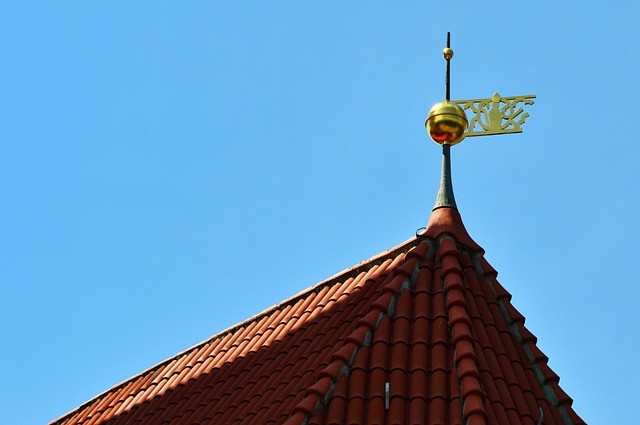Residential roof waterproofing is a critical component for protecting homes from environmental damage, extending roof lifespans, and preventing issues like mold growth. Integrating this with green roofs and solar installations offers a sustainable solution that enhances structural integrity, energy efficiency, and property value. By selecting compatible waterproof membranes, combining these technologies provides leak protection, ecological benefits, and reduced water runoff, especially in regions with varying climates. Best practices for installation, maintenance, including regular inspections, ensure the system's longevity and functionality.
In today’s pursuit of sustainable living, integrating multiple eco-friendly technologies onto rooftops is gaining traction. This article explores a synergistic approach by discussing the combination of residential roof waterproofing, green roofs, and solar installations. We delve into the foundational role of waterproofing in creating robust, sustainable roof systems and its seamless integration with aesthetic and functional benefits of green roofs and solar panels. By understanding these interactions, homeowners and professionals can maximize the environmental and economic advantages.
Understanding Residential Roof Waterproofing: The Foundation for Sustainable Roof Systems
Green Roofs and Solar Panels: A Synergistic Relationship
Green roofs and solar installations share a synergistic relationship, offering both environmental benefits and practical solutions for modern homes. When integrated with comprehensive residential roof waterproofing, this combination becomes even more powerful. A green roof provides insulation, absorbs rainwater, and creates a biodiversity-rich habitat, reducing urban heat island effects and lowering energy consumption for heating and cooling. Solar panels, on the other hand, harness renewable energy from the sun, contributing to a home’s energy efficiency and potentially reducing utility bills.
By combining these technologies with robust waterproofing, homeowners can ensure that their roofs remain structurally sound and protected against the elements while reaping the ecological advantages of green spaces and clean energy. This holistic approach allows for more sustainable living, enhancing the overall value and longevity of residential properties.
Integrating Waterproofing into Green Roof Design
When designing a green roof, incorporating residential roof waterproofing is an essential step to ensure the longevity and functionality of the system. Waterproofing serves as a critical barrier, protecting the structural integrity of the building below by preventing water penetration. It’s particularly vital in regions with varying climates, where extreme weather conditions could pose significant risks.
The integration process involves selecting suitable waterproof membranes that are compatible with green roof components. These membranes should be durable, flexible, and able to withstand the weight of the growing medium and plants while providing an effective barrier against leaks. By combining waterproofing with the environmental benefits of green roofs and solar panels, homeowners can enjoy a sustainable and low-maintenance solution that enhances energy efficiency and reduces water runoff.
Benefits of Combining Waterproofing with Solar Installations
Combining residential roof waterproofing with solar installations offers a range of benefits, enhancing both the structural integrity and environmental efficiency of a building. Waterproofing acts as a protective barrier, shielding the underlying roof structure from moisture intrusion, which is particularly crucial for areas prone to heavy rainfall or snow. By integrating this system with solar panels, you create a synergistic relationship that goes beyond functionality. The waterproof layer ensures the longevity of the solar installation by preventing water damage to the panels and the electrical components they house.
Moreover, this dual system contributes to sustainable living. Green roofs, when combined with proper waterproofing, provide an additional layer of insulation, reducing energy consumption for heating and cooling. Solar panels, already known for their environmental benefits, become even more efficient in a waterproofed environment, as they are protected from debris and extreme weather conditions that could otherwise reduce their performance over time. This integration exemplifies the modern approach to residential construction, merging practical considerations with eco-friendly solutions.
Best Practices for Installation and Maintenance
When integrating waterproofing with green roofs and solar panels, best practices for installation and maintenance are crucial for ensuring longevity and performance. Begin by thoroughly inspecting the existing residential roof waterproofing to identify any vulnerabilities or damage. A robust waterproofing membrane, such as a high-performance, reflective material, should be installed beneath the green roof system to shield against moisture intrusion. Proper drainage is paramount; ensure efficient water flow away from the building with strategic placement of outlets and channels.
Regular maintenance is key. Inspect the system regularly for signs of wear or damage, addressing issues promptly. Keep plant life well-managed within the green roof to prevent excessive weight gain that could compromise waterproofing. For solar installations, ensure proper flashing around mounts to maintain a watertight seal. Seasonal cleaning and inspections are essential, especially in regions with heavy snowfall, to safeguard against potential water accumulation and freezing.
Integrating waterproofing with green roofs and solar installations is a harmonious blend of sustainability and protection. By understanding the foundational role of residential roof waterproofing, harnessing the symbiotic relationship between green roofs and solar panels, and implementing best practices for installation and maintenance, homeowners can create robust, eco-friendly, and energy-efficient living spaces. This comprehensive approach not only ensures a dry, safe interior but also contributes to a greener planet, making it a wise choice for forward-thinking residents.
